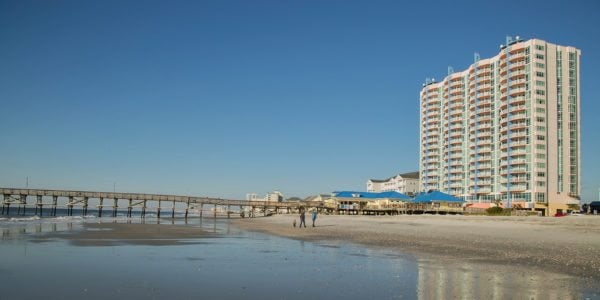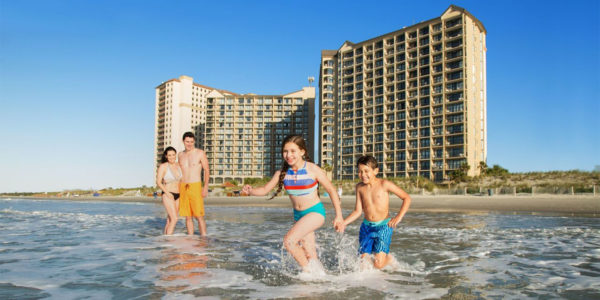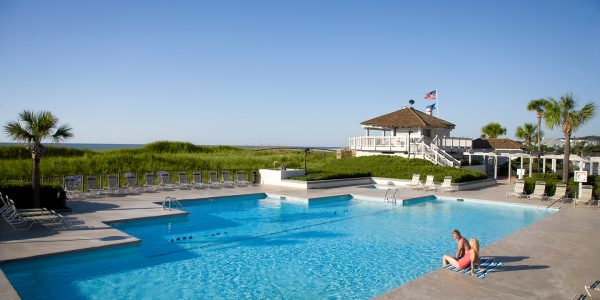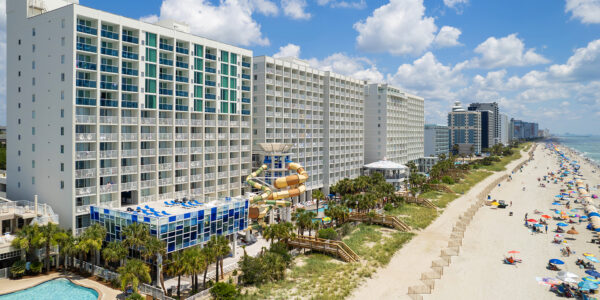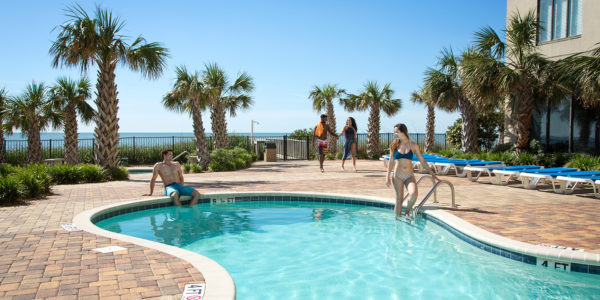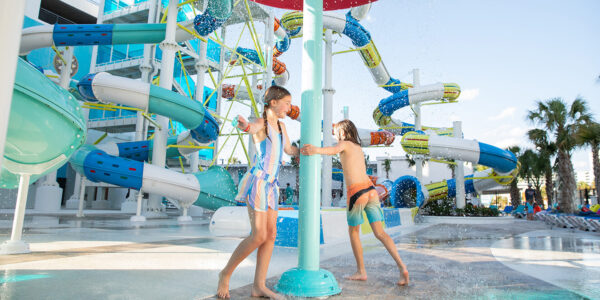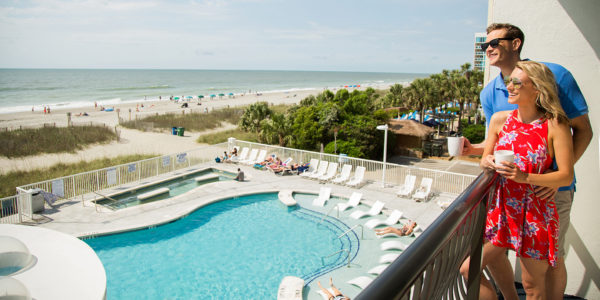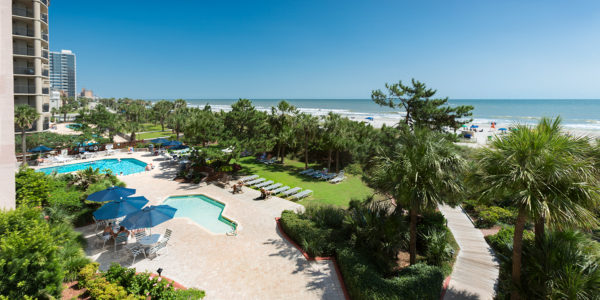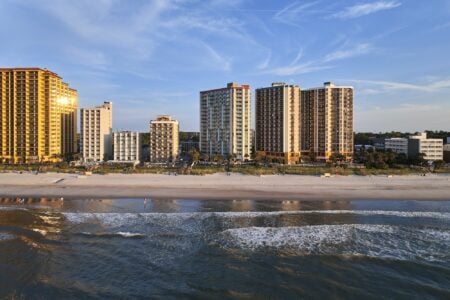Play it Safe at the Beach: How to Read Lifeguard Flags
By MyrtleBeachHotels.com Staff • July 9, 2013One of the things families love about vacations in Myrtle Beach is how safe the beaches are—when the weather is nice, the surf generally mellow, so kids can play in the waves. Plus, there are lifeguards stationed at regular intervals along the beach from the north end of the strand to south seven days a week from 9 a.m. to 5 p.m.
The lifeguards are a great asset, and many visitors love to take advantage of their services renting beach chairs and umbrellas in Myrtle Beach. But the lifeguards’ number one job is to help make sure that you and your family are safe!
One important thing to keep your eye on when you come to the beach is the flags the lifeguards put out. Here’s what to look for, with comments from Meghan Kelly, recruiting and training manager at Lacks Beach Service, the largest provider of lifeguard services in Myrtle Beach:
Yellow flag:
A lifeguard is on duty
“This is just our general on duty flag, it means there’s nothing particularly dangerous that we want to warn you about. It says ‘on duty swim with caution,’ and the ordinance is that they have to be within 50 yards of shore or chest deep at all times, so if anyone goes out farther than that we’ll call them back. So for a 6-year-old and an adult, chest-deep means something different, and we’ll watch attention to that.”
Blue flag:
Aquatic danger
“The blue aquatic hazard flag has pictures of jellyfish on it, we use that for jellyfish but we’ll also use it when conditions change and we need to restrict it so that people can only go out to waist deep. We do that if the water is really rough or if there’s a high rip current advisory.
If they come to the beach and see the blue flag, they should come up and ask the lifeguard what the conditions are like.”
Red flag:
No swimming allowed
“We put that up when we need to clear out the water. We’ll do that if there’s lightning, or if there’s a shark in the area and we’re waiting for it to clear out. We have had to go to no swimming for storms, rough seas and high rip current. It only happens maybe once or twice a season.”
If you’re ever at the beach and want more information or aren’t sure what the flags mean, don’t be afraid to approach the lifeguard and ask what’s up! They’re there to help, and will be happy to fill you in on whether the conditions are safe.
“I would say if you’re unsure come and talk to the lifeguard,” Kelly said. “If this is your first time coming here, talk to us. People don’t realize that the water here can be rough, and we do have problems with rip currents because of sandbars. If you’re not a good swimmer or if you’re not used to swimming in the ocean, definitely come check in.”
Published 7/9/13




